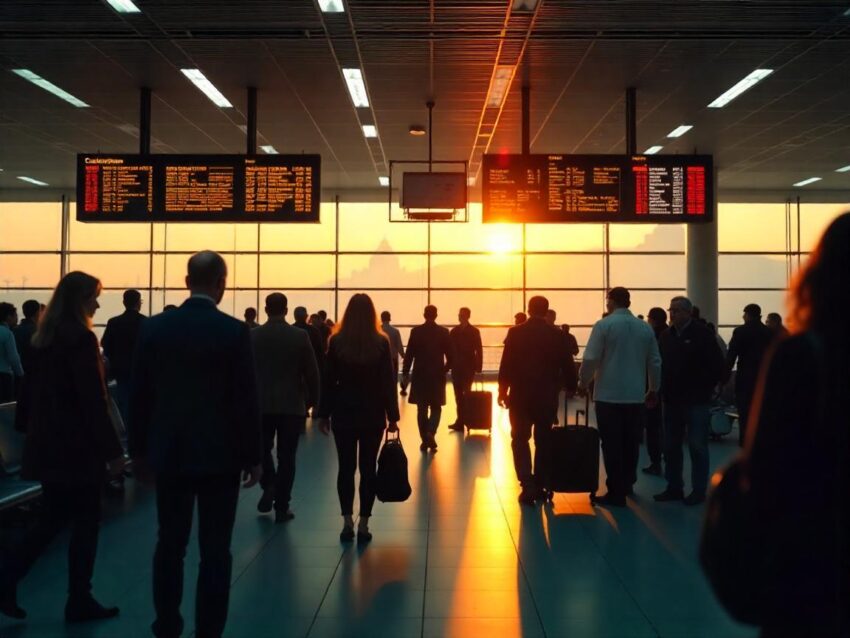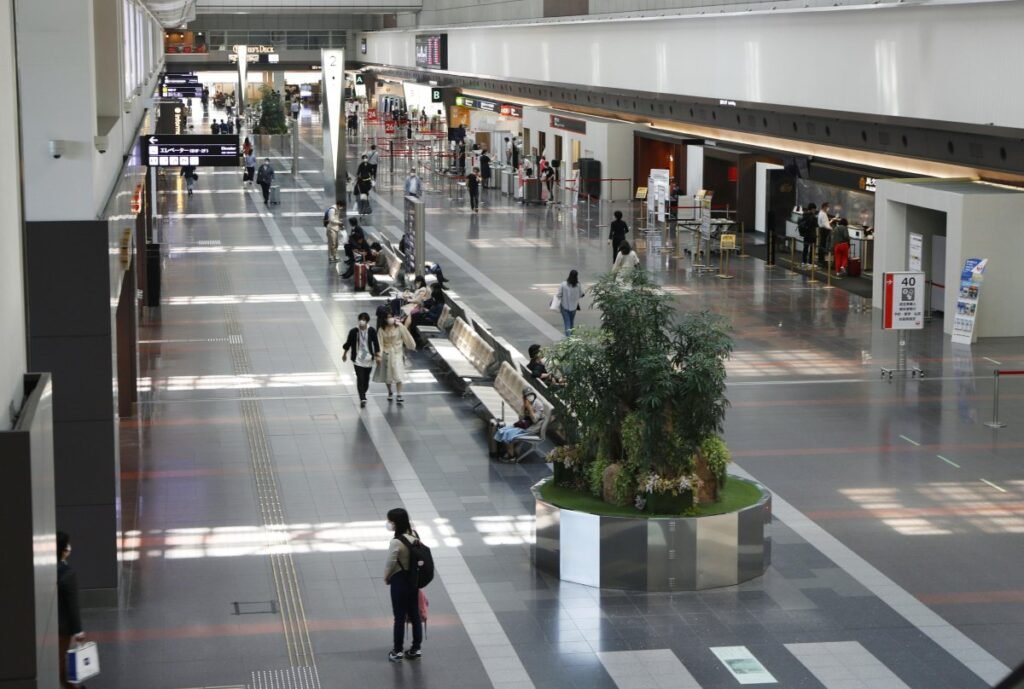Wednesday, July 2, 2025

Now France is set to join Finland, Germany, United Kingdom in facing significant airport disruption, fueling a perfect storm of new travel chaos that looms over Europe’s busy summer skies, and this is the latest update you need to know. Meanwhile, travelers are reeling as France joins Finland, Germany, United Kingdom in a tense battle against significant airport disruption, threatening to unravel carefully planned holidays and business trips.
A strike by air traffic controllers in France is expected to severely impact flights to, from, and over France during two tense days, plunging the country into a fresh wave of travel disruption just as summer holidaymakers crowd airports. Meanwhile, travelers brace for chaos as the French Civil Aviation Authority (DGAC) demands a nationwide reduction in airport capacity, forcing airlines to slash schedules and cancel countless flights.
However, this isn’t merely a logistical hiccup—it’s a fiery clash driven by deep grievances. The strike, spearheaded by UNSA-ICNA, France’s second-largest air traffic control union, erupts over accusations of toxic and authoritarian management, and fierce demands for more staff and higher pay.
Moreover, while SNCTA—the powerful union commanding 60% of controllers—has stayed out of the fight, the shadow of grounded planes and stranded passengers looms large. Now, all eyes turn to French skies, wondering how far this disruption will ripple across Europe.
However, this isn’t just another hiccup in the travel landscape. France joins Finland, Germany, United Kingdom on the growing list of countries where significant airport disruption could spark widespread delays, cancellations, and stranded passengers.
Moreover, with every announcement, the threat of new travel chaos looms larger. France joins Finland, Germany, United Kingdom in grappling with strikes, staff shortages, and operational crises, leaving millions wondering if their journeys will even get off the ground.
Now, the latest update you need to know is urgent, as chaos inches closer, ready to test the resilience of Europe’s skies—and the patience of every traveler.
A Storm Gathers Over French Skies
Europe’s summer skies are darkening as France faces the threat of a massive air traffic controller strike, poised to bring travel chaos to millions.
The French Civil Aviation Authority (DGAC) has issued an urgent warning: expect sweeping flight cancellations and widespread delays as controllers walk off the job for two crucial days.
Meanwhile, Paris and the sunny south of France stand on the front lines of this disruption, with airlines scrambling to cancel flights and travelers left in limbo.
However, this isn’t just a French problem—it’s a European crisis in the making.
The Roots of the Crisis
The latest turmoil comes courtesy of the UNSA-ICNA, France’s second-largest air traffic controller union. They’re furious over what they describe as toxic, authoritarian management and are demanding higher pay and better staffing levels.
Moreover, negotiations have collapsed, leaving no choice but to strike, the union says.
Meanwhile, the larger SNCTA union, which represents about 60% of French controllers, has stayed out of the fray—for now. However, their silence offers cold comfort to travelers facing mass cancellations.
Flights Slashed Across France
The DGAC has ordered airlines to slash operations nationwide. The impact will be staggering.
In Paris alone—Charles de Gaulle, Orly, and Beauvais airports—airlines must cancel a quarter of all flights. That’s a devastating blow during the high season when planes are packed with tourists, business travelers, and families escaping for holidays.
Moreover, Nice Airport faces a particularly brutal cut. On July 3 alone, more than 50% of flights to and from the glamorous Côte d’Azur hub are expected to be axed.
Meanwhile, Corsica will suffer, too, with Bastia and Calvi bracing for major schedule disruptions.
Airlines have also been forced to reduce operations by 30% at Lyon, Marseille, Montpellier, Ajaccio, and Figari.
Chaos Beyond France’s Borders
However, the strike’s fallout won’t stay confined to French airspace.
France sits at the crossroads of Europe’s air routes. Planes flying between Spain and Germany, Italy and the UK, or even transatlantic flights often rely on traversing French skies.
As a result, this strike could spark domino-effect delays across the entire continent. Airlines might reroute planes to avoid French airspace, adding precious minutes—or hours—to journeys.
Moreover, the summer season compounds the misery. Flights are already operating near capacity, leaving airlines little flexibility to absorb sudden changes.
France’s Busiest Airports Under Siege
Each French airspace region now faces a different level of pain.
- Marseille ACC East and West expect high impact all day, with minimum service reduced or removed.
- Paris ACC East will drop to minimal service by mid-morning, risking severe bottlenecks.
- Nice, critically, has no possibility of removing minimum service constraints, ensuring a very high impact.
- Even smaller hubs like Montpellier, Bastia, and Bordeaux will see moderate to high disruption as controllers walk out.
Meanwhile, at major airports like Charles de Gaulle, staff brace for long lines, confused passengers, and mounting frustration.
Passengers Left in Turmoil
For travelers, the news couldn’t come at a worse time.
Summer 2025 has already been turbulent, with strikes, ATC bottlenecks, and record passenger volumes. Now, France’s looming shutdown threatens to shatter carefully crafted holiday plans.
Moreover, the DGAC is urging passengers to check with airlines, reschedule flights, and expect significant delays.
However, that’s little consolation to travelers holding non-refundable tickets, locked into rigid hotel bookings, or facing time-sensitive journeys.
Meanwhile, social media is ablaze with frantic posts from passengers desperate for answers, fueling a sense of helplessness.
Airlines Grapple With Chaos
Airlines across Europe are now scrambling to adapt.
Carriers must juggle aircraft rotations, crew schedules, and passenger rebookings while trying to minimize financial losses.
Moreover, last-minute cancellations cost airlines millions—not just in refunds but in missed connections, compensation claims, and operational chaos.
Meanwhile, budget carriers like Ryanair and easyJet face even starker challenges, as their tight schedules and razor-thin margins leave little room for error.
However, even premium airlines like Air France and British Airways can’t escape the turbulence.
Legal Limits Offer Some Relief—but Not Enough
French law requires striking air traffic controllers to notify their employers at least 48 hours in advance. This rule, aimed at minimizing chaos, has offered some room for planning.
Moreover, the DGAC’s advance warnings mean airlines can pre-emptively cancel flights instead of leaving passengers stranded last minute.
However, with the scale of this strike, even the best-laid contingency plans might not be enough. Airports still brace for operational meltdowns, angry crowds, and ripple effects lasting well beyond the official strike dates.
A Broader Industry Crisis
Beyond this single strike, Europe’s aviation sector is grappling with a deeper problem: staffing shortages and labor unrest.
ATC personnel shortages remain chronic across Europe. Pandemic-era retirements and hiring freezes gutted the workforce. Now, surging travel demand has exposed every weak link.
Moreover, unions argue controllers are burned out, overworked, and stretched too thin to handle modern traffic volumes safely.
Meanwhile, passengers are paying the price—in delays, cancellations, and rising ticket prices.
What Passengers Should Do Now
For travelers facing the looming strike, proactive steps are crucial.
- Check flight status regularly.
- Sign up for airline text or email alerts.
- Consider rebooking to travel outside strike dates if possible.
- Allow extra time at the airport for potential chaos.
- Understand rights under EU261 for compensation in case of cancellations.
Moreover, flexibility is key. Passengers willing to adjust plans stand the best chance of avoiding total travel collapse.
A Volatile Summer Ahead
As July begins, Europe’s skies remain under siege from labor strife, air traffic snarls, and relentless traveler demand.
France’s air traffic controller strike is merely the latest flare-up in a season defined by uncertainty.
Meanwhile, travelers hold their breath, hoping the summer sun outshines the gathering storm clouds.
However, as UNSA-ICNA digs in its heels and airlines brace for disruption, one thing is clear: this summer, no traveler can take a smooth journey for granted.
Europe’s Skies Under Siege: ATC Strikes in Finland, Germany, and Beyond Threaten Summer Travel, Unleashing Fresh Waves of Chaos for Passengers
Europe’s skies under siege: ATC strikes in Finland, Germany, and beyond threaten summer travel, unleashing fresh waves of chaos for passengers desperate to chase sunshine and freedom. Meanwhile, what should have been a season of smooth journeys and golden memories has erupted into uncertainty as Europe’s skies under siege become the stage for worker unrest and operational strain.
However, this crisis runs deeper than headlines. ATC strikes in Finland, Germany, and beyond threaten summer travel on a scale that rattles even seasoned travelers. Airports brace for queues. Airlines scramble for contingency plans. Meanwhile, families, business travelers, and adventurers stand caught in the crossfire.
Moreover, every delay ripples far beyond national borders, reminding us that Europe’s skies under siege affect not only local journeys but the global travel ecosystem.
As ATC strikes in Finland, Germany, and beyond threaten summer travel, passengers hold their breath, wondering how far this chaos might spread—and whether their dream trips will survive.
Ask ChatGPT
Summer Chaos Spreads Beyond France
As Europe plunges into the height of summer travel, travelers are learning a hard truth: the turbulence shaking the skies isn’t just caused by weather or crowded runways.
Across the continent, air traffic control (ATC) strikes and staffing crises are erupting in unexpected places, threatening to snarl holiday plans and pile fresh chaos onto an already strained industry.
While France has stolen headlines for its sweeping walkouts, this summer’s disruption map stretches far wider. From Finland’s icy north to Germany’s economic heartlands, skies are becoming battlegrounds where labor disputes, aging infrastructure, and surging passenger demand collide.
Meanwhile, passengers brace for ripple effects that could stretch far beyond national borders.
Finland’s Ground Services Brought to a Halt
This week, Finland became the latest flashpoint. Between July 2 and 4, the Finnish Aviation Union (IAU) staged a powerful strike that stopped ground services at Helsinki-Vantaa Airport for hours each day.
This was no minor blip. Over 100 Finnair flights were immediately disrupted, and the airline preemptively canceled around 230 additional flights in anticipation of the chaos. An estimated 28,000 passengers found themselves suddenly grounded or rebooked.
Moreover, Helsinki-Vantaa Airport isn’t just Finland’s aviation hub—it’s a crucial gateway for passengers traveling between Europe and Asia. The fallout rippled into international connections, leaving long-haul travelers scrambling for alternatives.
However, Finland’s strike isn’t simply about wages. Union representatives have highlighted worker fatigue, staff shortages, and growing pressure to deliver smooth operations amid skyrocketing passenger numbers.
Meanwhile, Finnair faces mounting costs, both financially and in lost consumer confidence.
Germany Feels the Pinch of ATC Staff Shortages
While Finland deals with open strikes, Germany is fighting a quieter but equally dangerous battle: chronic ATC staffing shortages.
Recent Eurocontrol reports flagged airports like Düsseldorf as hotspots where flight regulations had to be imposed due to insufficient air traffic controllers on duty.
Though not officially on strike, German ATC centers are stretched dangerously thin. Controllers juggle increasing workloads, leading to regulated arrivals, delayed departures, and last-minute rerouting of aircraft.
Moreover, Germany serves as Europe’s central artery for east-west and north-south air routes. Disruptions here echo far beyond its borders, complicating connections for millions of travelers.
Meanwhile, German aviation unions warn that without significant investment in recruitment and training, the crisis could worsen in the coming years.
However, with summer passenger volumes reaching pre-pandemic levels, airlines have little room to absorb such shocks.
UK’s Gatwick Struggles With Staffing Strains
Even the United Kingdom hasn’t been spared.
Eurocontrol reports highlighted staffing constraints at Gatwick Airport, forcing regulated arrivals and operational slowdowns.
Though not a formal strike, these limitations have real consequences for passengers. Delayed flights ripple through tightly scheduled operations, leaving travelers stranded or missing onward connections.
Moreover, the UK aviation industry faces a unique cocktail of challenges post-Brexit. Recruiting and retaining skilled ATC personnel has grown increasingly difficult, exacerbating vulnerabilities when demand peaks.
Meanwhile, British travelers planning continental trips this summer must navigate not only homegrown disruptions but also the domino effect of strikes sweeping across European skies.
Spain’s Legacy of Air Traffic Disruption
While Spain hasn’t witnessed fresh ATC strikes this July, memories linger of past crises that brought its airspace to a standstill.
The infamous 2010 walkout saw Spanish air traffic controllers leave their posts en masse, forcing the government to deploy military personnel to restore operations. The lockout disrupted holiday travel for hundreds of thousands and remains a stark reminder of how swiftly ATC disputes can spiral into national emergencies.
Moreover, Ryanair recently sounded the alarm, citing Spain as one of Europe’s worst hotspots for ATC-related delays this year, with over 11,500 flights impacted between January and May 2025.
Meanwhile, Spanish unions remain vocal, warning that unless staffing and working conditions improve, more turbulence could be on the horizon.
Overflights Face Unseen Threats
Beyond individual countries, there’s another invisible danger lurking in the skies: overflights.
Many passengers don’t realize that even if they’re not flying to or from a strike-affected country, their aircraft may need to traverse that nation’s airspace. When controllers strike or staffing levels drop, planes must reroute around the closed zones, adding time, cost, and complexity.
Moreover, airlines might burn extra fuel, accrue hefty fees for longer routes, or even cancel flights altogether.
Meanwhile, Europe’s densely interconnected skies mean that a localized strike can trigger continent-wide delays. For example, flights between Spain and Germany often pass over French or German airspace. A bottleneck in one country can snarl the entire network.
The Financial Toll of Strikes and Delays
For airlines, ATC disruptions deliver a brutal financial punch.
Each canceled flight costs tens of thousands of euros, factoring in passenger compensation, crew repositioning, and lost revenue. The cumulative impact of even a short strike can bleed millions from carriers’ fragile profit margins.
Moreover, the reputational damage can linger long after normal operations resume. Passengers grow wary of booking future flights, worried that another strike could upend their plans.
Meanwhile, travel insurance claims skyrocket, adding further pressure to both airlines and insurers.
Passengers Caught in the Crossfire
For ordinary travelers, these ATC battles feel personal.
One moment, a dream trip to Greece or a crucial business meeting in Berlin seems secure. The next, screens flash “Cancelled,” leaving passengers scrambling for alternative flights, hotels, or refunds.
Moreover, summer 2025 has delivered an unprecedented wave of travel demand. Planes are full. Hotels are booked. Rebooking passengers on short notice has become a logistical nightmare.
However, there are steps travelers can take. Industry experts advise checking flight status often, subscribing to airline alerts, and booking with flexible tickets wherever possible.
Meanwhile, understanding rights under EU261 regulations can help passengers secure compensation if cancellations or delays fall outside “extraordinary circumstances.”
A Broader Crisis Looms
These scattered strikes and staffing shortages aren’t isolated events—they’re symptoms of a deeper structural problem.
Europe’s aviation system is straining under the combined weight of record passenger numbers, chronic underinvestment in ATC staffing, and geopolitical tensions disrupting global flight patterns.
Moreover, climate change is reshaping how airports operate, with more storms and heatwaves adding layers of unpredictability to summer schedules.
Meanwhile, the aviation industry continues its race to modernize infrastructure, adopt new technologies, and train the next generation of air traffic controllers before the system reaches a breaking point.
Looking Ahead
As travelers flock to Europe’s sun-drenched beaches and historic cities this summer, one reality remains clear: the skies are more vulnerable than they appear.
From Finland’s union halls to Germany’s control towers, the fragile machinery of European aviation faces challenges that go far beyond runway congestion.
However, the resilience of airlines, airport staff, and air traffic controllers continues to keep millions flying safely.
Meanwhile, passengers would do well to remember that in this interconnected world, the fate of their journey might hinge on a single air traffic controller’s shift thousands of miles away.
This summer, vigilance and flexibility may prove the best travel companions of all.
«Enjoyed this post? Never miss out on future posts by following us»









